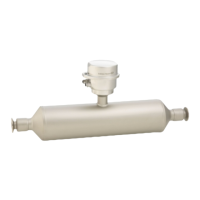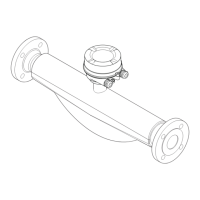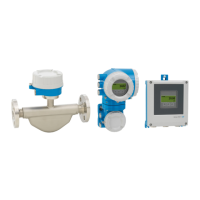Proline Promass I 300 PROFINET Table of contents
Endress+Hauser 3
Table of contents
1 About this document ................ 6
1.1 Document function ..................... 6
1.2 Symbols .............................. 6
1.2.1 Safety symbols .................. 6
1.2.2 Electrical symbols ................ 6
1.2.3 Communication symbols ........... 6
1.2.4 Tool symbols .................... 7
1.2.5 Symbols for
certain types of information ......... 7
1.2.6 Symbols in graphics ............... 7
1.3 Documentation ........................ 8
1.3.1 Standard documentation ........... 8
1.3.2 Supplementary device-dependent
documentation .................. 8
1.4 Registered trademarks ................... 8
2 Safety instructions ................ 10
2.1 Requirements for the personnel ........... 10
2.2 Designated use ....................... 10
2.3 Workplace safety ...................... 11
2.4 Operational safety ..................... 11
2.5 Product safety ........................ 11
2.6 IT security ........................... 12
2.7 Device-specific IT security ................ 12
2.7.1 Protecting access via hardware write
protection ..................... 12
2.7.2 Protecting access via a password .... 12
2.7.3 Access via Web server ............ 13
2.7.4 Access via service interface (CDI-
RJ45) ........................ 14
3 Product description ................ 15
3.1 Product design ........................ 15
4 Incoming acceptance and product
identification ..................... 16
4.1 Incoming acceptance ................... 16
4.2 Product identification ................... 16
4.2.1 Transmitter nameplate ........... 17
4.2.2 Sensor nameplate ............... 18
4.2.3 Symbols on measuring device ...... 19
5 Storage and transport ............. 20
5.1 Storage conditions ..................... 20
5.2 Transporting the product ................ 20
5.2.1 Measuring devices without lifting
lugs ......................... 20
5.2.2 Measuring devices with lifting lugs .. 21
5.2.3 Transporting with a fork lift ........ 21
5.3 Packaging disposal ..................... 21
6 Installation ....................... 22
6.1 Installation conditions .................. 22
6.1.1 Mounting position ............... 22
6.1.2 Environmental and process
requirements .................. 24
6.1.3 Special mounting instructions ...... 25
6.2 Mounting the measuring device ........... 28
6.2.1 Required tools .................. 28
6.2.2 Preparing the measuring device ..... 28
6.2.3 Mounting the measuring device ..... 28
6.2.4 Turning the transmitter housing .... 29
6.2.5 Turning the display module ........ 29
6.3 Post-installation check .................. 30
7 Electrical connection .............. 31
7.1 Connection conditions .................. 31
7.1.1 Required tools .................. 31
7.1.2 Requirements for connecting cable ... 31
7.1.3 Terminal assignment ............. 34
7.1.4 Device plugs available ............ 34
7.1.5 Pin assignment of device plug ...... 34
7.1.6 Preparing the measuring device ..... 34
7.2 Connecting the measuring device .......... 35
7.2.1 Connecting the transmitter ........ 35
7.2.2 Integrating the transmitter into a
network ...................... 39
7.2.3 Connecting the remote display and
operating module DKX001 ........ 41
7.3 Ensuring potential equalization ........... 41
7.3.1 Requirements .................. 41
7.4 Special connection instructions ............ 42
7.4.1 Connection examples ............. 42
7.5 Hardware settings ..................... 45
7.5.1 Setting the device name ........... 45
7.5.2 Activating the default IP address .... 47
7.6 Ensuring the degree of protection .......... 47
7.7 Post-connection check .................. 48
8 Operation options ................. 49
8.1 Overview of operation options ............ 49
8.2 Structure and function of the operating
menu .............................. 50
8.2.1 Structure of the operating menu .... 50
8.2.2 Operating philosophy ............ 51
8.3 Access to the operating menu via the local
display ............................. 52
8.3.1 Operational display .............. 52
8.3.2 Navigation view ................ 53
8.3.3 Editing view ................... 55
8.3.4 Operating elements .............. 57
8.3.5 Opening the context menu ......... 57
8.3.6 Navigating and selecting from list ... 59
8.3.7 Calling the parameter directly ...... 59
8.3.8 Calling up help text .............. 60

